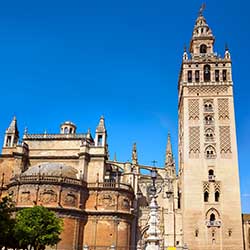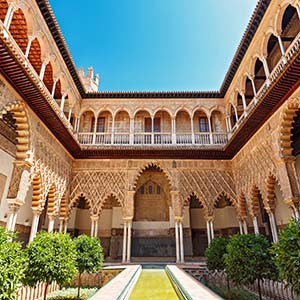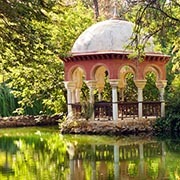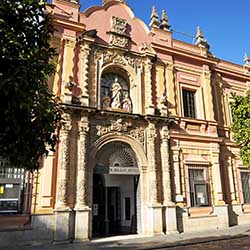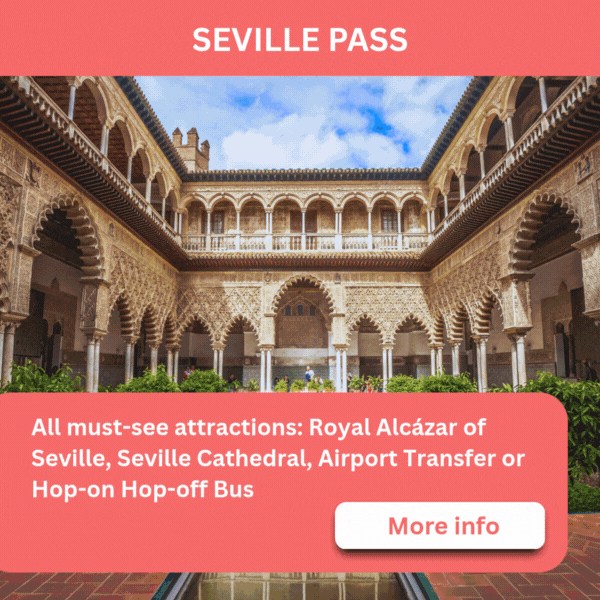
Plaza de España Seville
Visit the famous Spanish Square in Sevilla Spain

Do you need tickets for the Spanish Square in Seville? Visit 'Plaza de España Sevilla', one of the most spectacular spaces in Seville, with the main building of the Ibero-American Exhibition of 1929.
Visit Plaza de España
Info & Tickets Plaza de España Seville |
|
| Metro | Prado de San Sebastian (line 1) |
| Tickets | No tickets needed. You can visit of the public square is free |
| Opening hours | The Spanish square is open all day |
The overwhelming Plaza de España is the most famous square in Seville. Several buildings were designed for the Ibero-American exhibition of 1929 in and around the Maria-Luisa Park. Aníbal González designed this Spanish square, which is in Spanish Renaissance style with a diameter of 200 metres. Spain's goal with the exhibition was to make symbolic peace with its former American colonies.
Plaza de España, the Spanish Steps in Seville
The shape of Plaza de España is a semi-circle, surrounded by a row of buildings that today are, for the most part, used as government institutions. There are two tall towers on the flanks of the square. Of note are the 52 benches and mosaics of tiles located at the foot of the building on the Spanish square. These 52 frescos depict all 52 Spanish provinces. The tiles are typical of Andalusia Spain, the so-called azulejos. Spanish tourists visiting Seville are only too happy to pose in their own province.
Other fixtures of the square are the large fountain in the middle and the round canal with the many cute bridges. You can even rent a boat and sail through the canals. The Spanish square underwent a huge renovation in October 2010. This top attraction should not be missed during your Seville city trip and is one of Seville's most visited attractions, drawing millions of tourists each year who come to admire its beauty.
Did you know? Facts of Plaza de España
- Architectural Marvel: Designed by Aníbal González, Plaza de España was built in 1928 for the Ibero-American Exposition of 1929. It combines elements of Renaissance Revival and Moorish Revival styles, showcasing intricate tilework, graceful bridges and stunning architecture.
- Symbolic Design: The plaza's semi-circular shape represents Spain embracing its former colonies, with a canal symbolizing the ocean connecting Spain to the Americas.
- Tilework Extravaganza: The plaza is adorned with over 7,000 colorful ceramic tiles, depicting historical events, provinces of Spain, and scenes from Spanish literature and mythology.
- Role in Cinema: Plaza de España has served as a backdrop for numerous films, most notably appearing in the Star Wars saga as the location of Theed on the planet Naboo in "Star Wars: Episode II - Attack of the Clones".
- Venetian Influence: The bridges crossing the canal are reminiscent of Venice's iconic waterways, adding a romantic and picturesque charm to the plaza.
- Regional Representations: The plaza features alcoves along its walls, each representing a different province of Spain through ceramic tile murals and benches.
- Artistic Details: The plaza's architecture is adorned with intricate carvings, including representations of Spanish royalty, coats of arms, and other symbolic motifs.
- Renaissance Influence: The building materials and architectural style of Plaza de España draw heavily from Renaissance aesthetics, with grand arches, ornate balustrades, and majestic towers.
- Central Structure: At the center of the plaza stands the Vicente Traver Fountain, named after the engineer who designed the water system for the Ibero-American Exposition.
Activities around the Spanish square
Location Plaza de España in Seville
Nearby the Square of Spain are also:
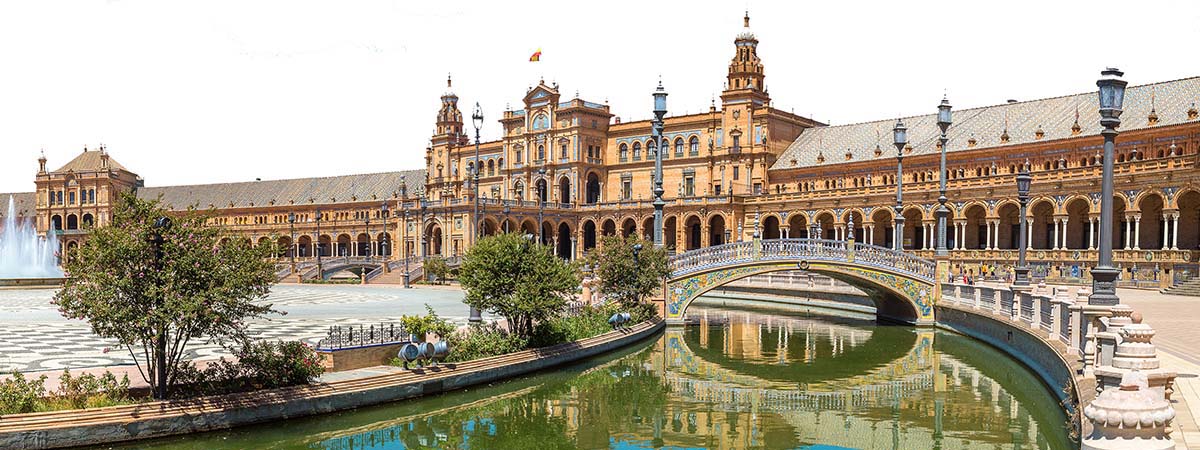
Partnerlinks: Spanish square Rome, Alhambra de Grenade and Place d'Espagne Rome
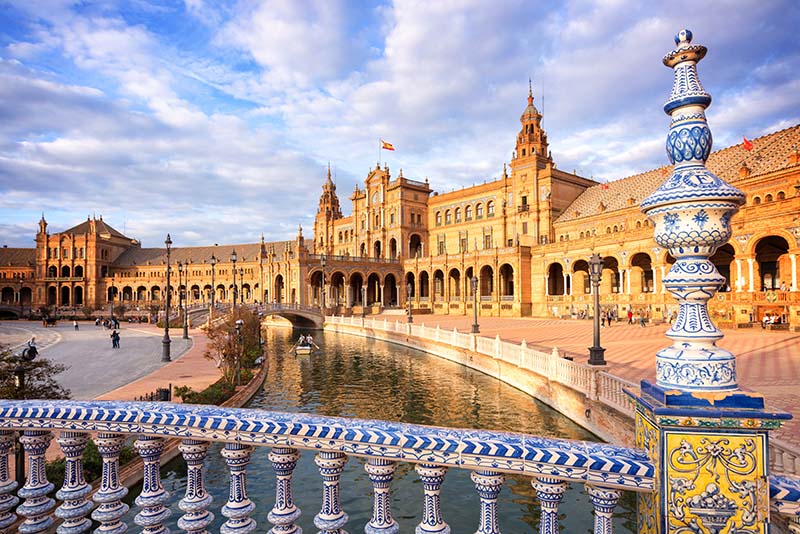
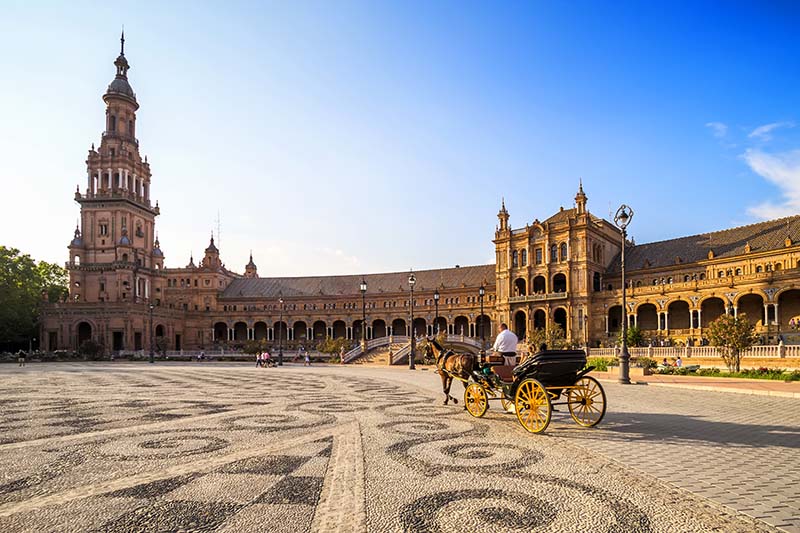 The Spanish Steps in Seville
The Spanish Steps in Seville